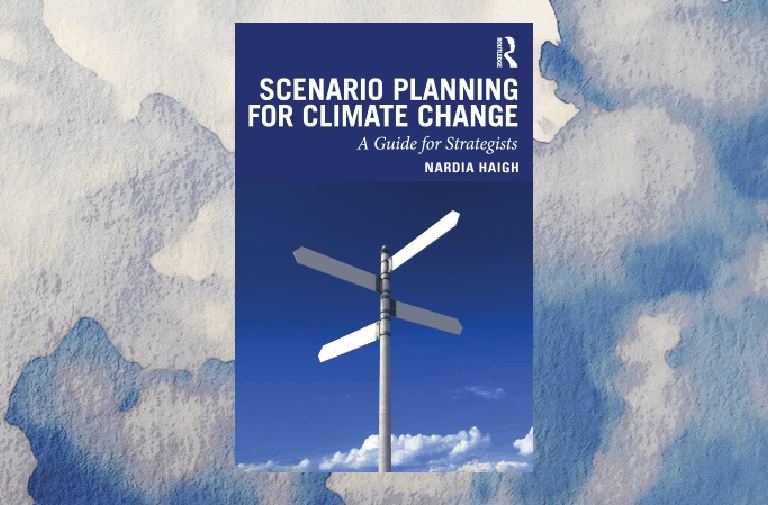 Scenario Planning for Climate Change: A Guide for Strategists
Scenario Planning for Climate Change: A Guide for Strategists
Nardia Haigh
Routledge (www.routeledge.com)
Had Christopher Bullock known of climate change, I am confident he would have added it to his shortlist of things in life of which we can be certain. As is the case for death and taxes, we would all do well to anticipate and plan for the consequences of Earth’s warming.
A daunting task, I know, but one for which help does exist. Professor Haigh’s work provides a very readable and relatable step-by-step guide for the development of organizational strategies geared to meeting the challenges that will lie in wait over the course of years.
Scenario planning recognizes that we live in an uncertain world and are limited in our ability to control or predict the future. However, by developing alternative storylines and crafting adaptive pathways for responding to the various plausible changes that could occur, an organization can exercise some control over how it fairs in the face of change.
Consider the southern New England lobster industry. Warming ocean temperatures are pushing lobster populations further north into Nova Scotia. Rising ocean temperatures are a well-documented consequence of climate change. Although the lobstermen cannot control for the warming waters caused by global greenhouse gas emissions, scenario planning would allow them to anticipate coming changes and devise adaptive responses, e.g., diversifying their catches, moving their boats northward, or catering to the tourist trade through day cruises.
Several of the elements of the scenario planning process presented by Dr. Haigh are particularly well-suited to the complexities of climate change. Strategists are encouraged to think in terms of what the world will be like 20 to 25 years out rather than a more traditional period of five years.
Climate change is not about short-term changes in the weather but long-term systemic environmental shifts in response to warming temperatures. Scenario planning is about the efforts of an organization to stay relevant in relation to a host of external factors beyond climate including the enactment of government policies and shifts in population.
Planning teams are encouraged to cast their nets wide in anticipating what driving forces will be in play in the years ahead and ranking the possible scenarios based on their plausibility.
Dr. Haigh emphasizes that scenario planning is not about reaching a consensus on a singular tomorrow. There is not a future but multiple possible futures and equally multiple possible pathways down which their organizations can travel.
What strategists will learn by taking the journey Dr. Haigh outlines in her work is that by anticipating the uncertainties of climate change on society that an organization can increase its certainty of response and relevance over a long period. It is a trip worth taking.






